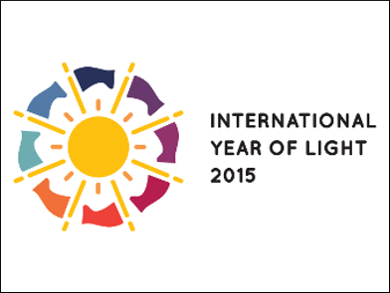2015 is the IUPAC International Year of Light, and Angewandte Chemie is publishing a special issue to mark this event. The issue contains an Essay entitled “Light: A Very Peculiar Reactant and Product” by Vincenzo Balzani, and well as Reviews on multidimensional spectroscopy of photochemical reactions (Tobias Brixner et al.) and photochemical approaches for surface functionalization (Guillaume Delaittre, Christopher Barner-Kowollik et al.), and a Minireview on visible-light-activated molecular switches (David Bléger and Stefan Hecht). The issue is completed with a selection of Communications on topics ranging from photoredox catalysis to solar cells, and from fluorescence imaging to upconversion.
The issue starts with an Editorial by Thorsten Bach from the Technische Universität München. Bach begins by commenting that chemistry somehow seems to be overlooked where light is concerned, and points out that the link between light and chemistry is in fact very important. Of course, the various spectroscopic techniques that involve light are well known, but what about the point of view of a synthetic photochemist?
Photochemistry allows access to structures that are inaccessible by other means. If light is used as an energy source, no other external power supply is needed. Photocatalysis is becoming an even bigger field, and the knowledge and expertise of chemists is invaluable for artificial photosynthesis. These are just a few examples of how important the interaction between chemistry and light is, and what advantages this can bring to society in the future.
- Special Issue of Angewandte Chemie: International Year of Light,
Angew. Chem. Int. Ed. 2015, 54 (39). - More Chemistry with Light! More Light in Chemistry!,
Thorsten Bach,
Angew. Chem. Int. Ed. 2015.
DOI: 10.1002/anie.201507439 - International Year of Light 2015 (IYL 2015)
A global initiative adopted by the United Nations to raise awareness of how optical technologies promote sustainable development and provide solutions to worldwide challenges in energy, education, agriculture, communications, and health.



